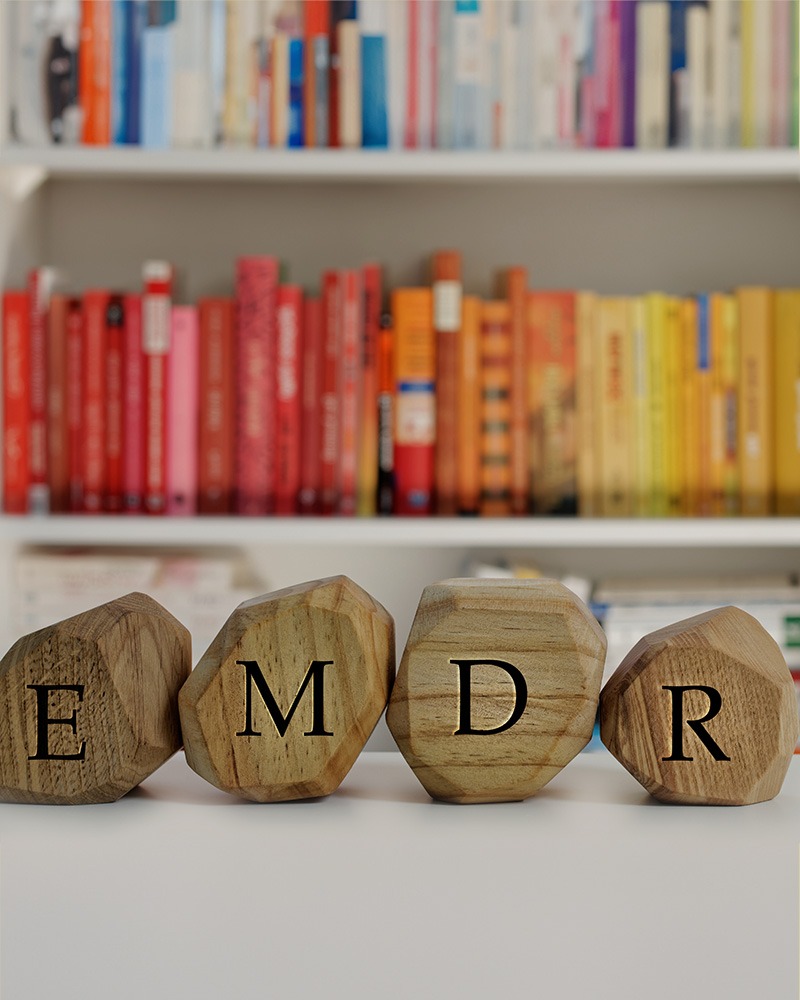You’ve been carrying the burden of your past for far too long. Maybe it feels like no matter how hard you try to move forward, something keeps pulling you back. Memories, emotions, or even certain places or people trigger a flood of fear, anxiety, or shame. It might feel like you’re constantly on edge, struggling to breathe through moments of panic, or feeling completely numb, disconnected from the world around you. You’re not alone in feeling this way.
If you’ve been through trauma, you’re likely all too familiar with this constant battle within yourself. Perhaps you’ve spent years trying to forget or minimize what happened, but the emotional weight continues to surface in unexpected ways—leaving you exhausted and overwhelmed. It might seem like no matter how much time has passed, the past still dictates your present.
Maybe you’ve even tried therapy before but felt frustrated when it didn’t get to the root of the pain. You deserve relief, not just temporary solutions. You deserve healing that lasts.
There is a way out of this pain. Eye Movement Desensitization and Reprocessing (EMDR) therapy offers a powerful, compassionate approach to healing trauma. Unlike therapies that ask you to retell every painful detail, EMDR allows you to process these experiences in a way that honors your pace and your boundaries. This therapy helps your brain naturally reprocess the trauma, reducing the emotional impact and freeing you from the heavy grip of the past.
Through a series of guided eye movements or gentle tapping, EMDR activates your brain’s healing processes, helping you release the emotional pain that’s been stored for so long. With each session, you’ll feel lighter, more in control, and less haunted by what happened.
Ready to Begin Your Journey Back to Yourself?
Why choose us for EMDR therapy in Houston?
Holistic focus
We believe in treating you as a whole person, not just a collection of symptoms. Our approach to mental health treatment goes beyond traditional talk therapy and considers how trauma affects your mind, body, emotions, and relationships. By understanding your complete story, we can help you achieve deeper, more lasting healing.
Integrative approach
While EMDR therapy forms the cornerstone of treating trauma and post-traumatic stress disorder (PTSD), we recognize that healing isn’t one-size-fits-all. Our therapists skillfully blend EMDR with other cutting-edge methods, like somatic therapy, Accelerated Resolution Therapy (ART), and the Safe and Sound Protocol (SSP) to create a personalized treatment approach that best serves your unique needs.
Late-night virtual sessions available
Healing shouldn’t have to wait for traditional office hours. We understand that life is busy, which is why we offer secure virtual EMDR sessions during evening hours. Whether you’re a parent, working professional, or night owl, you can access mental health care at times that work best for your schedule.
Thoughtful therapist matching
Finding the right therapist is crucial for successful EMDR work. Our careful matching process considers your specific trauma history, treatment goals, and personal preferences to connect you with a therapist who truly resonates with you. We take the time to understand your needs and ensure a strong therapeutic alliance from the start.
Highly trained clinicians
Our therapists are passionate about continuous learning and growth. Each clinician regularly participates in advanced training and professional development to stay current with the latest trauma treatment innovations. You can trust that you’re receiving care based on the most up-to-date therapeutic approaches.
Range of specialties
As trauma therapy experts, we understand that the emotional distress from past traumatic experiences can manifest in a number of different ways. We also specialize in treating anxiety disorders, eating disorders, depression, chronic stress/burnout, and more, so you can rest assured that you’re getting comprehensive care for your mental health.
Supportive and soothing therapy office
We’ve thoughtfully designed our space to support your healing journey. From comfortable furnishings to soothing colors to refreshments, every detail of our office environment has been carefully chosen to help you feel safe, supported, and ready to engage in the transformative work of EMDR therapy.
FAQs about EMDR therapy
What is EMDR Therapy?
EMDR isn’t just about talking through your trauma. It’s about healing the part of your brain stuck in survival mode since the painful event happened. When we experience something overwhelming, our brain sometimes can’t process it the way it normally would. That trauma stays with you, leaving you vulnerable to flashbacks, anxiety, or intense emotional reactions.
In EMDR therapy, we work together to revisit those difficult memories, but you won’t have to relive them in detail. Instead, through the use of bilateral stimulation—such as eye movements or gentle tapping—your brain starts to reprocess these memories, taking them from raw emotional wounds to something that no longer holds the same emotional charge. Over time, these memories become just that—memories, not triggers.
How does EMDR Therapy work?

Step 1: Understanding Your Story
Before you begin, you’ll take time with your therapist to deeply understand your experiences, your pain, and the ways trauma has impacted you. You will talk through your goals for therapy and what healing would look like for you. This stage is about creating a sense of safety and trust.
Step 2: Preparation
You will never be rushed into processing trauma until you feel ready. With your therapist, you’ll start by building skills for grounding and emotional regulation, so you can feel safe and empowered throughout the process. You’ll learn techniques that allow you to calm yourself when intense emotions arise.
Step 3: Reprocessing Traumatic Memories
When you feel ready, you will begin the process of gently revisiting the painful memories that continue to affect you. During this time, you’ll engage in bilateral stimulation—either through eye movements, tapping, or another method—while briefly recalling a traumatic memory. This allows your brain to reprocess the event, shifting how it’s stored and reducing the intensity of the emotions tied to it.
Step 4: Reflect and Heal
As you move through sessions, you’ll start to notice changes in how you feel about the past. Memories that once felt overwhelming will begin to lose their power over you, allowing you to approach life with greater confidence, peace, and strength.
As therapists who deeply understand the profound impact of trauma, we are here to offer you not just treatment, but a partnership in healing. We know how isolating it can feel when trauma leaves you disconnected from yourself and those around you. Our approach is centered on compassion and respect for your unique journey. We’ll move at your pace, honoring your emotional limits while gently pushing toward healing.
Our training in EMDR and somatic therapies equips us to work with both your body and mind, helping you process trauma holistically. You don’t have to keep reliving the pain—you deserve relief, and together, we can make that a reality.

Who is EMDR For?
If you’re living with the weight of trauma, whether from a single event or a series of painful experiences, EMDR could be the path to the peace you’ve been longing for. It’s not just for those with severe PTSD. EMDR can help if you’re struggling with:
• Trauma and PTSD: From accidents to abuse, unresolved trauma can keep you stuck in patterns of fear or helplessness.
• Anxiety: Constant worry, panic attacks, or a sense of dread that you just can’t shake.
• Grief and Loss: Whether you’re coping with the death of a loved one or a significant life change, unresolved grief can keep you trapped in sorrow.
• Depression: If your depression is linked to past trauma or painful life experiences, EMDR can help you move beyond the feelings of hopelessness.
• Low Self-Esteem: Long-standing feelings of unworthiness often stem from negative experiences in our past that EMDR can help heal.
EMDR meets you where you are, helping you process and release what’s been holding you back, so you can live more freely and fully.
You don’t have to carry the pain of your past any longer. Schedule a free consultation to learn how EMDR therapy can help you find the peace, freedom, and healing you deserve.
Start EMDR treatment in Houston today
Ready to get started? Whether you’ve been through emotional or psychological trauma, experienced a deep loss, or want support processing traumatic events in your childhood, we’re here to help. Contact us today to get matched with an EMDR therapist and take the first step toward healing.









